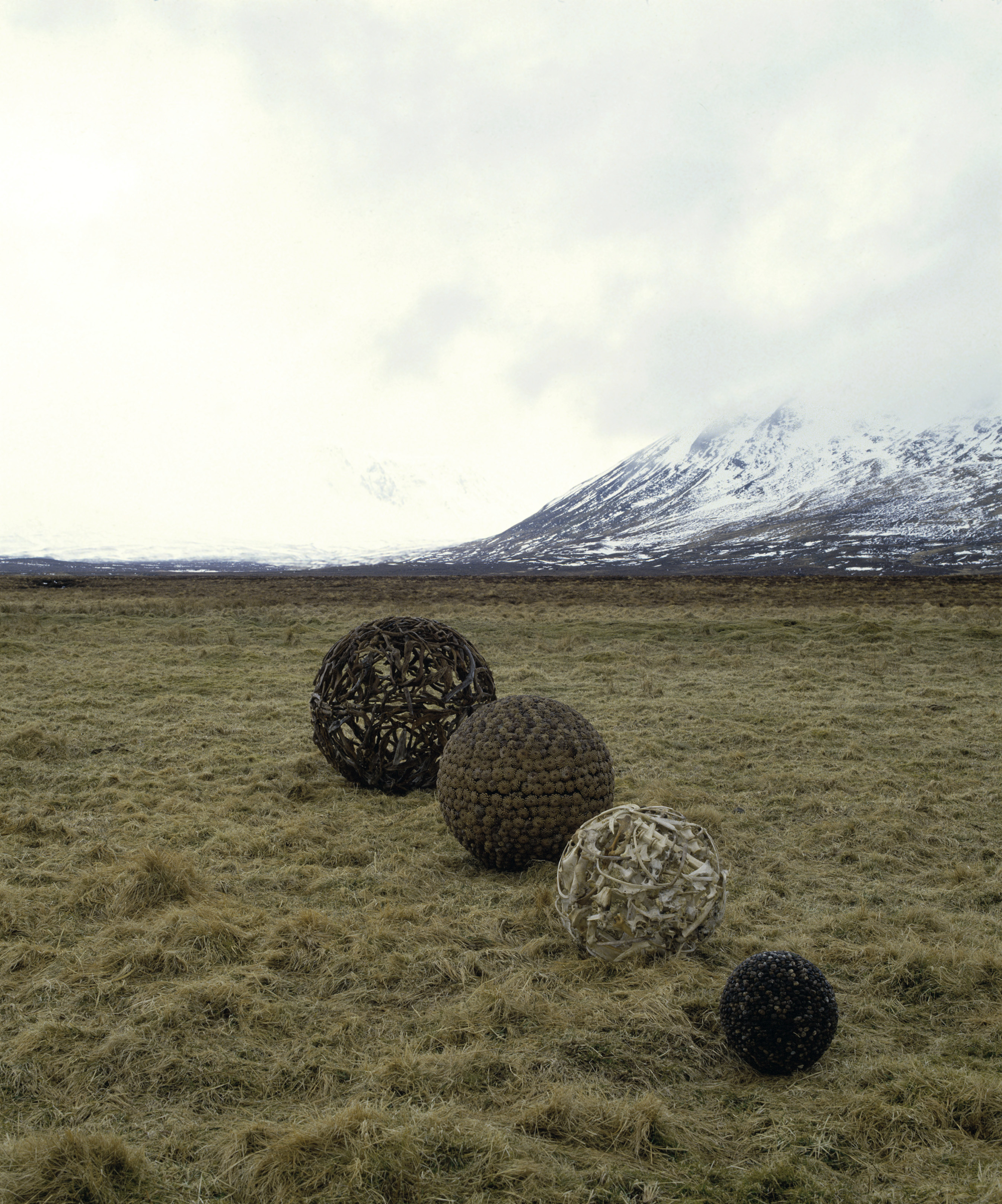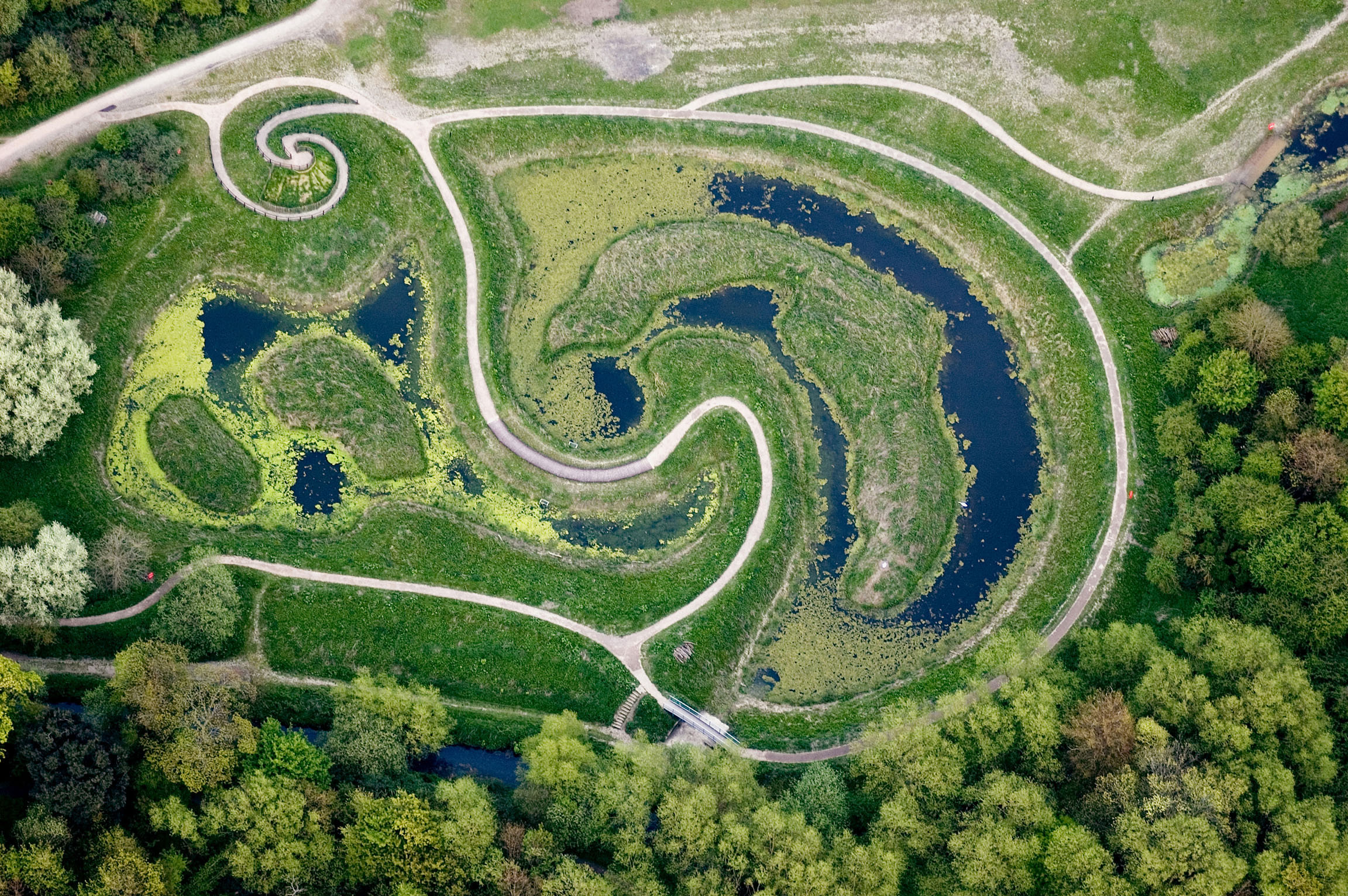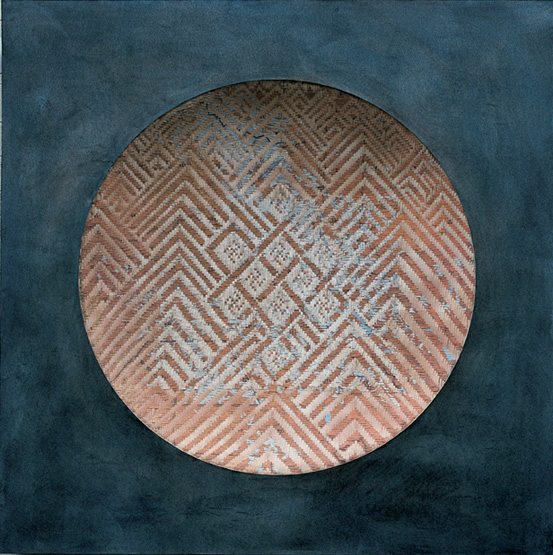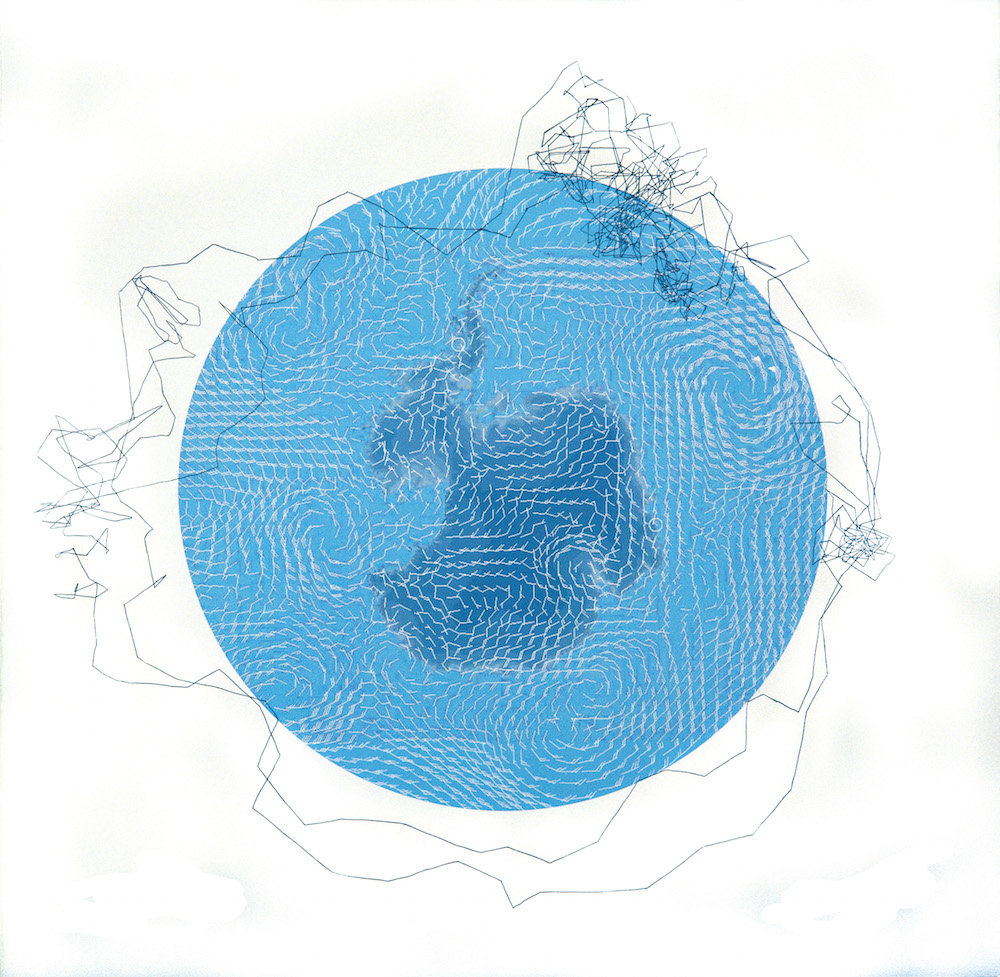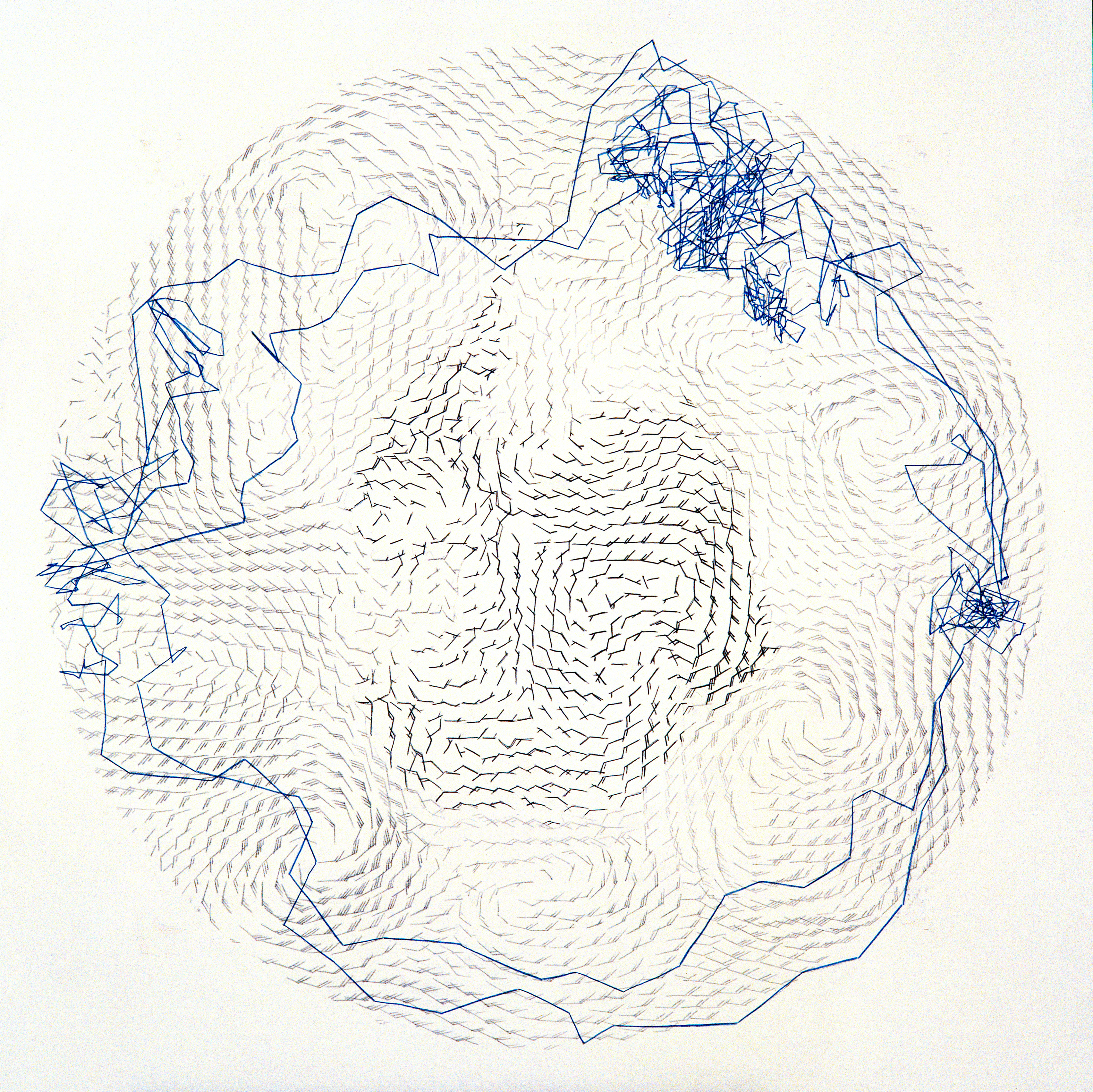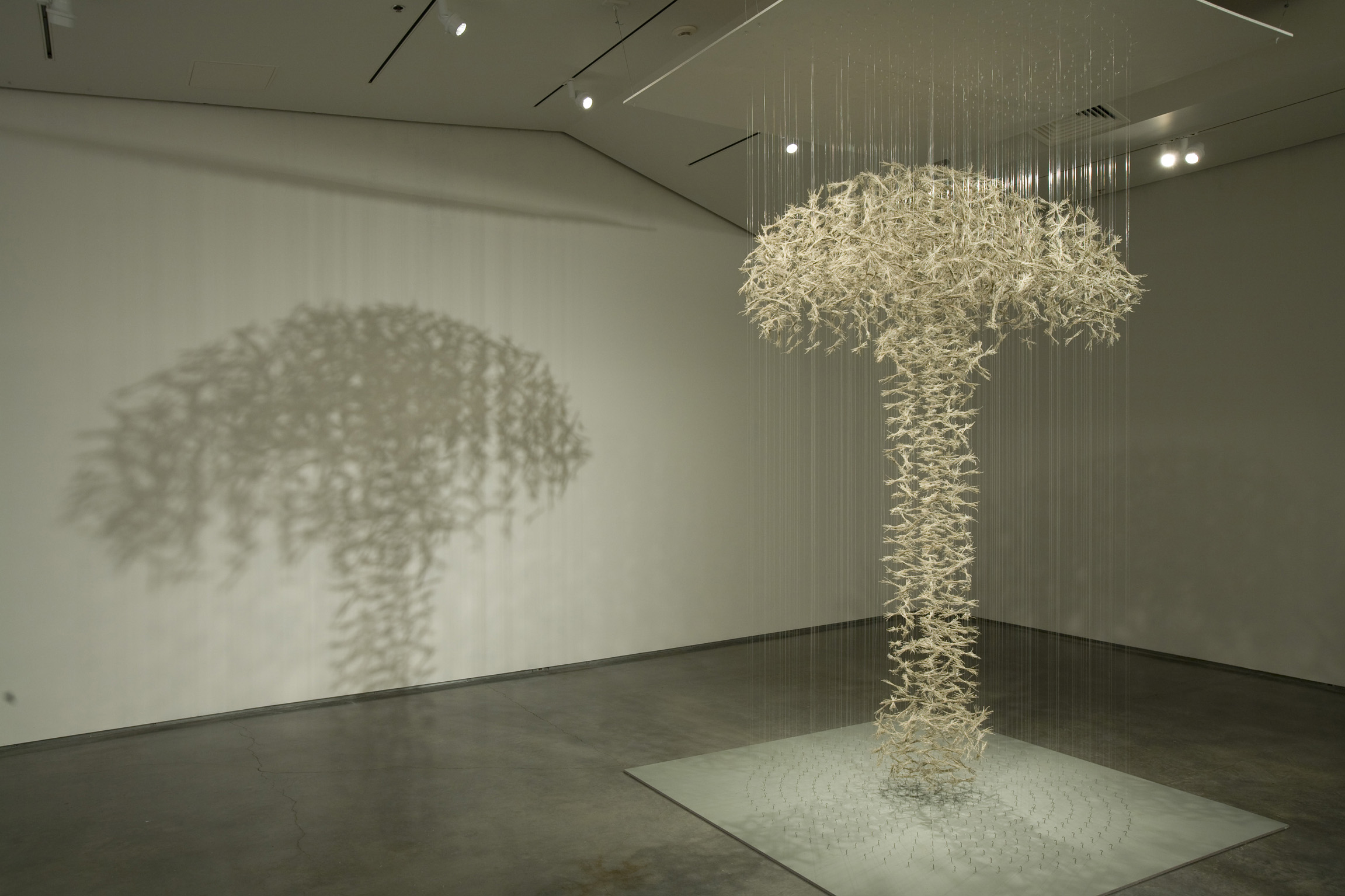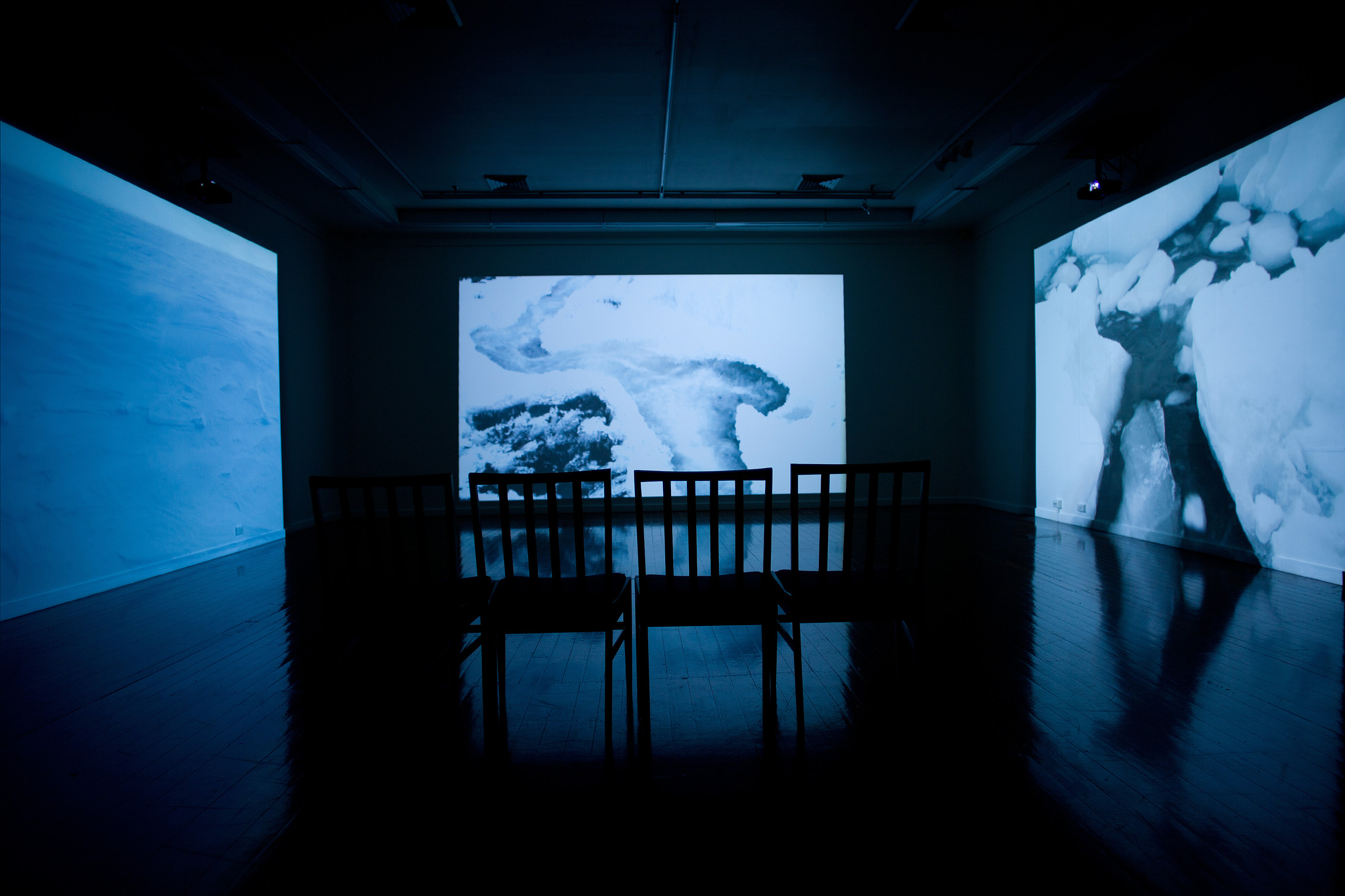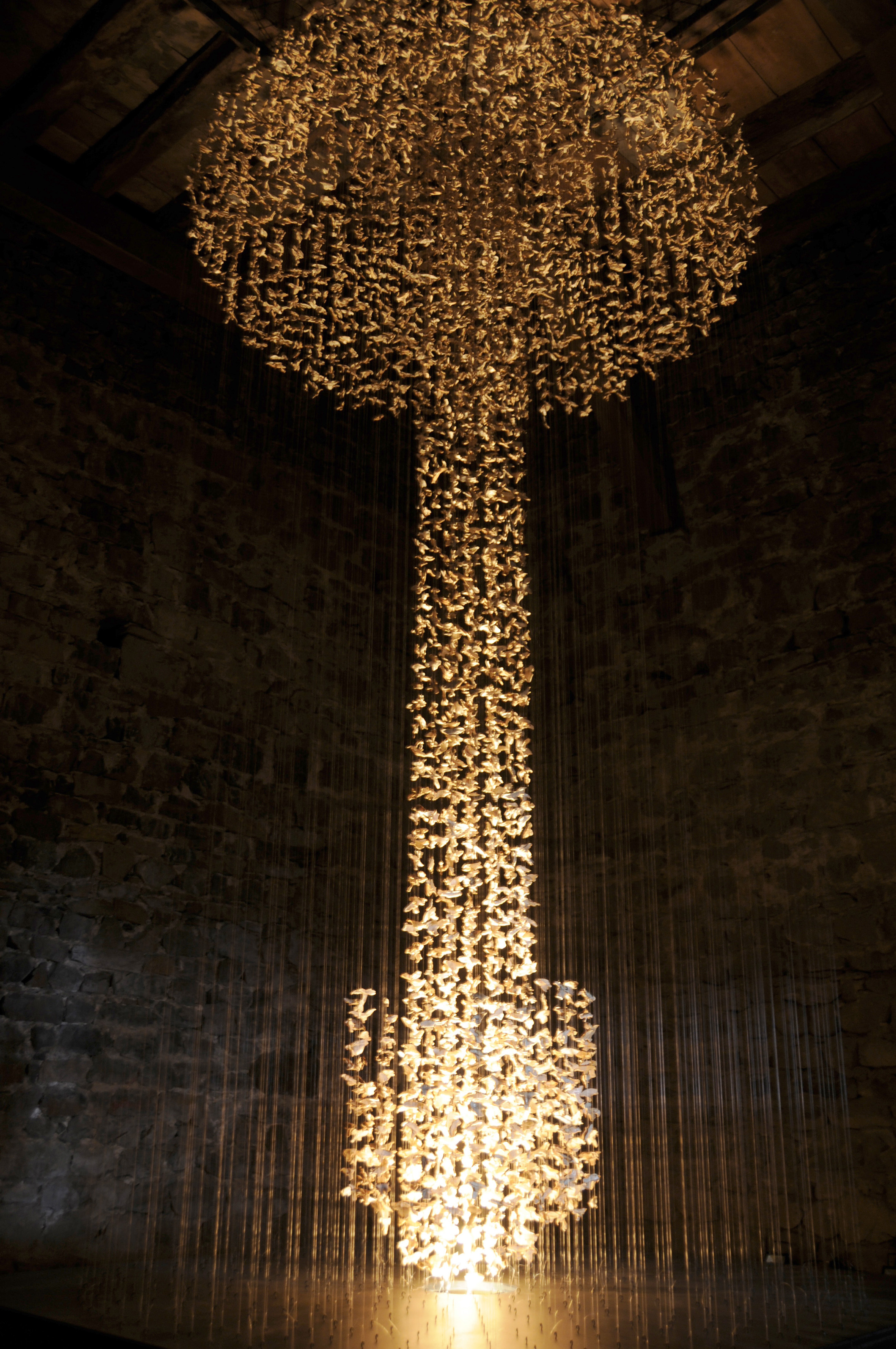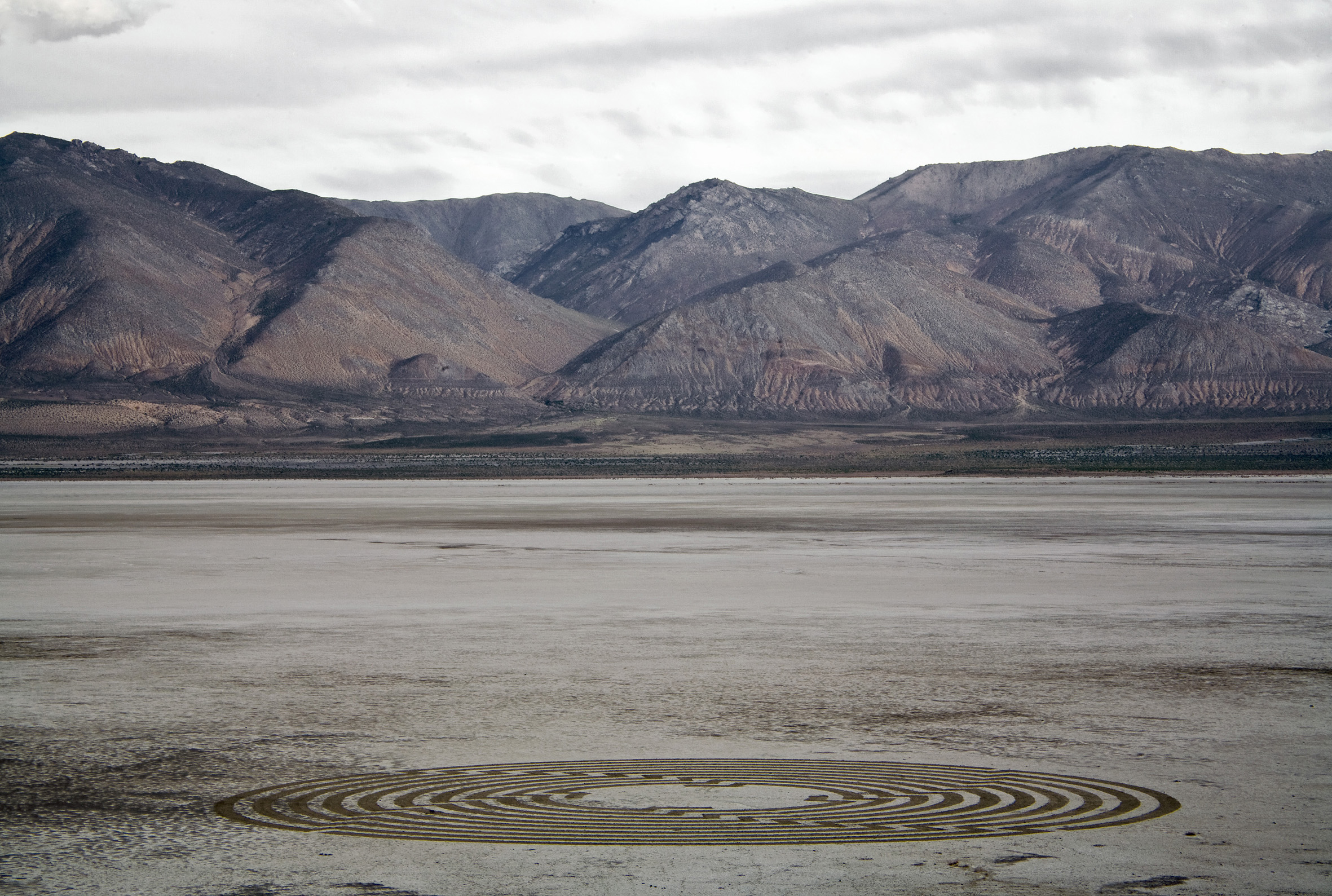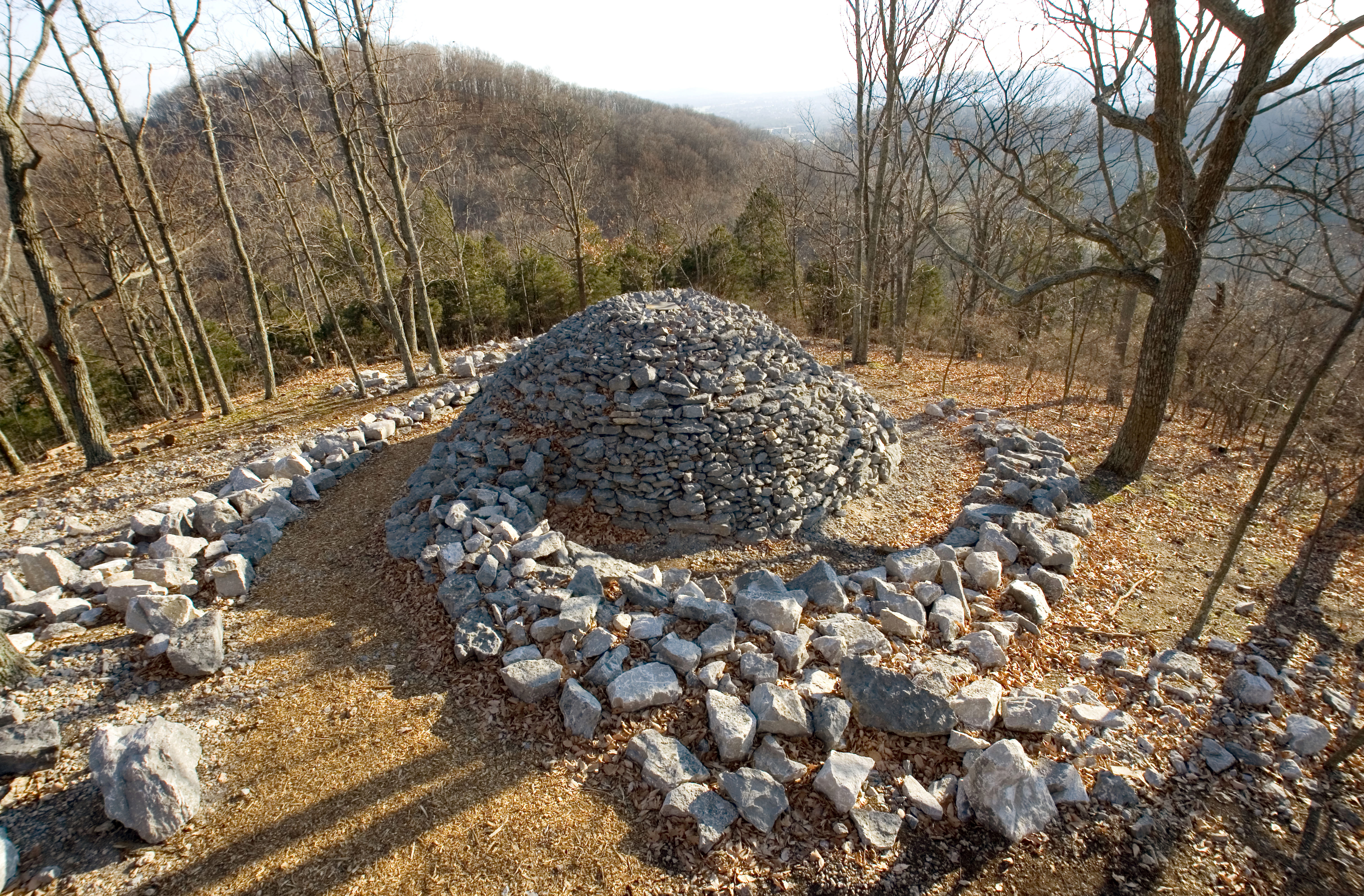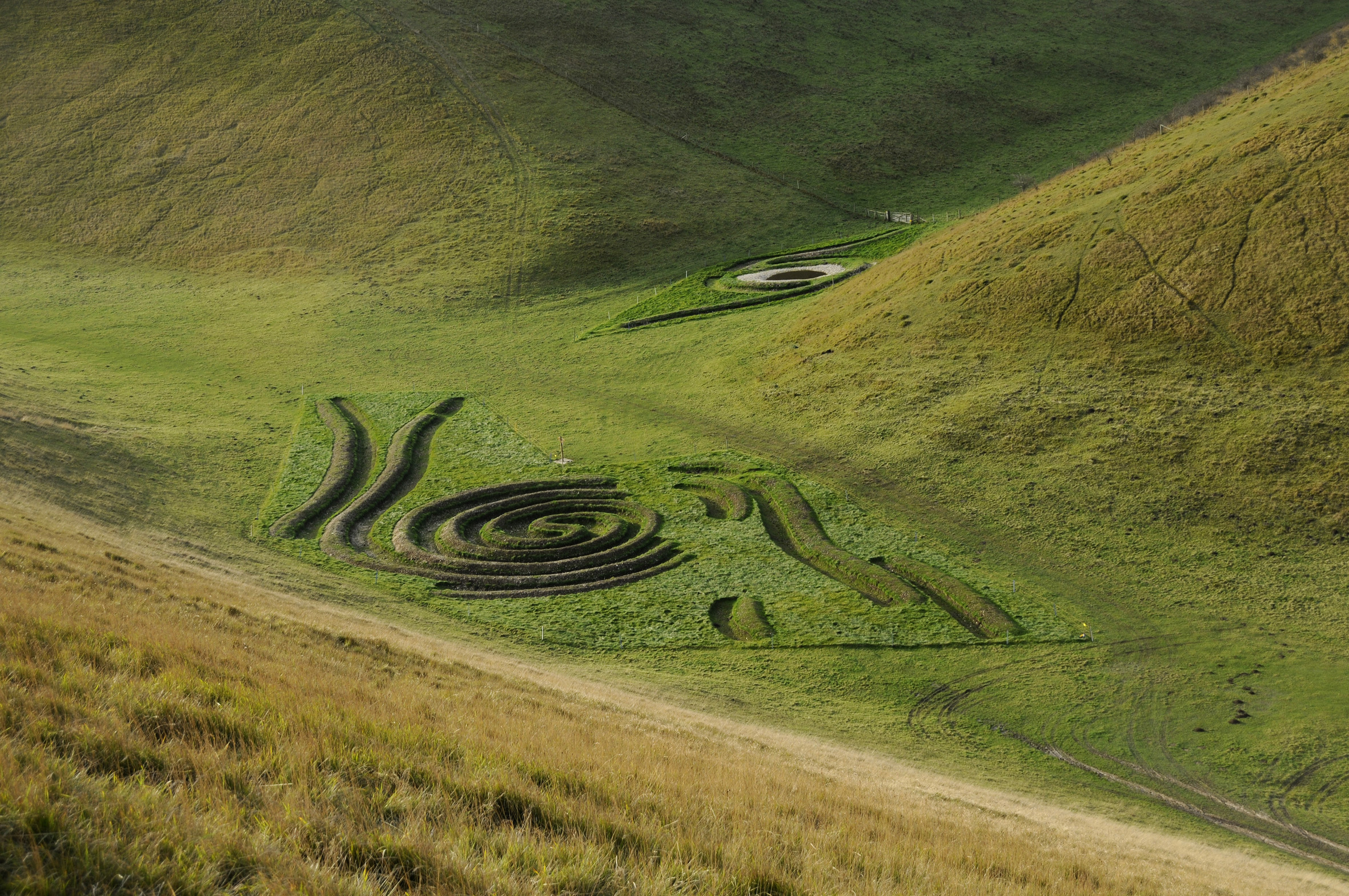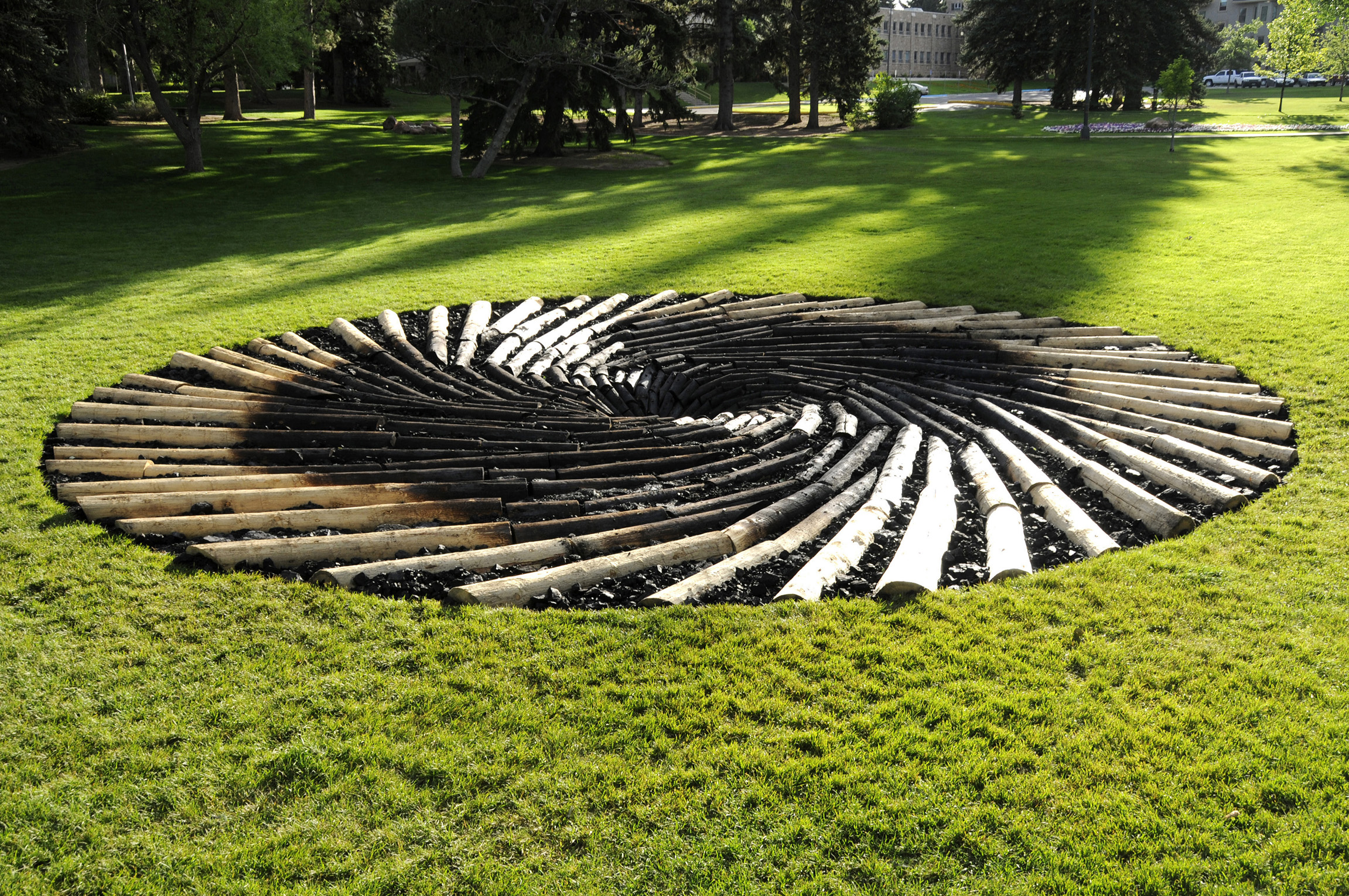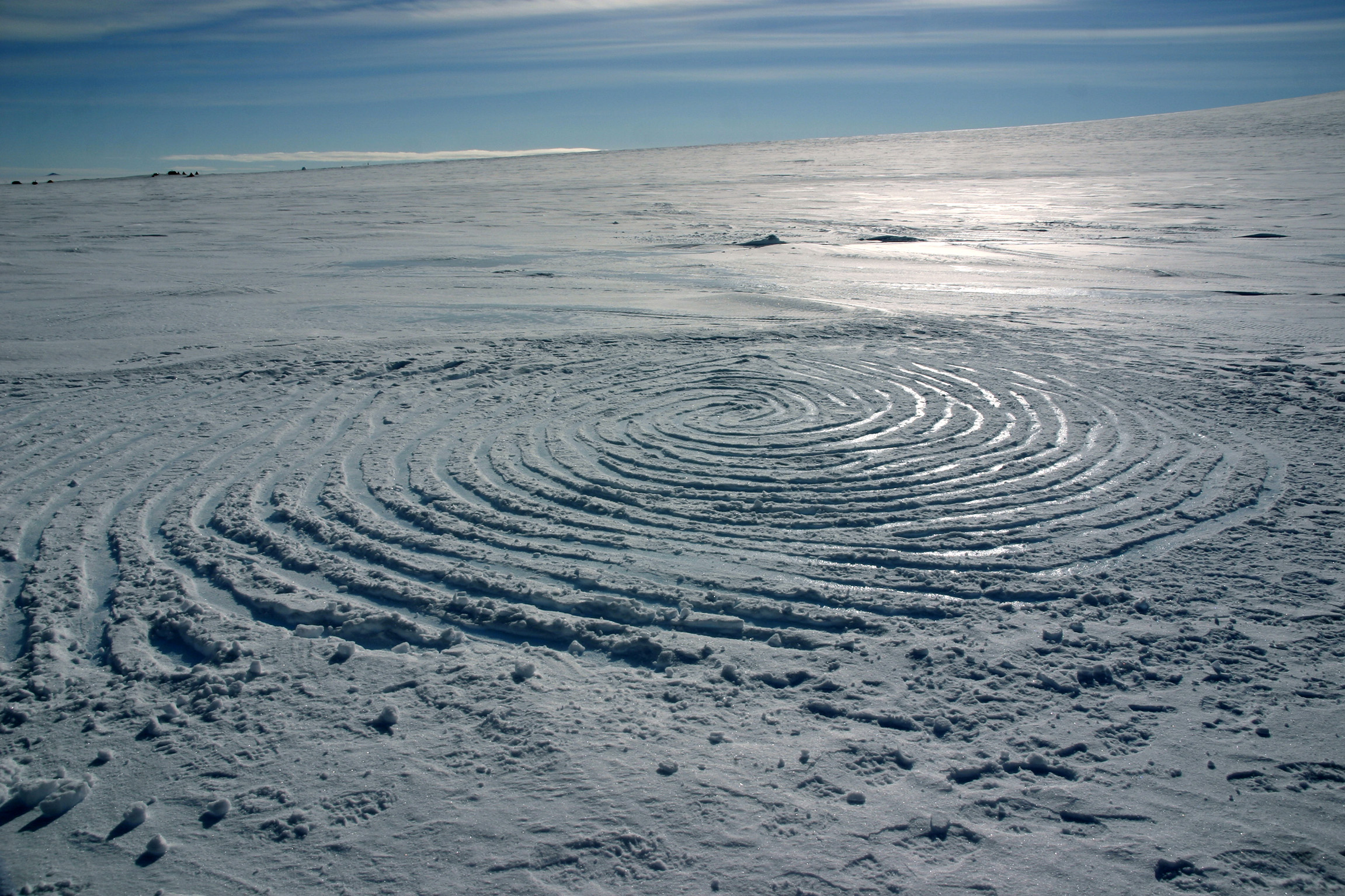
Can artists survive without gallery representation? Land artist Chris Drury looks back on a long and successful career working outside the system.
Not long after I had left Camberwell Art School, when I was living in a small cottage a mile down a rough track on the edge of the Romney Marsh, my dentist introduced me to his nephew Hamish Fulton who was living nearby. We became friends and in 1975 Hamish invited me to accompany him on a walk in the Canadian Rockies. It was October and we walked for two weeks in the snowbound mountains of Alberta. This experience was seminal for me because at that time, having been classically trained in Sculpture at Camberwell Art School, I was scraping a living making portrait heads in bronze of managing directors. I made the decision then to try to make work about the landscape I was living in and to try to make sense of what it means to dwell in a particular place at a particular time.
However, the world of Art and Nature, Land Art or Environmental Art is small, and what market there was in the 1970s in this country was occupied mostly by Fulton and Richard Long. Anything that looked remotely like it was considered second division. But in 1982 I made the work Medicine Wheel, a work that was a radical departure for me, as it was made over the course of a year, during which I picked up one natural object every day. Each object was strung between the spokes of a large wheel and at its centre was a mushroom spore print (mushrooms are something I have continued to be fascinated by ever since). The work plotted my connection to a place and time, following the threads of my life and the changing seasons.
In 1994, a small London gallery called Coracle, run by the poet Simon Cutts, showed this work. Simon had a very good eye for emerging artists and in one way or another was showing all the major artists of the time—Antony Gormley and Anish Kapoor to name two. Most of these artists used the gallery as a stepping-stone to larger and more commercial galleries. That year Simon took a number of his artists to New York for a show he put on in a new space. He took Medicine Wheel and although it received critical acclaim in the press it was considered unsaleable because of its ephemeral nature. In the end Medicine Wheel came back to the UK where Coracle showed it at the Serpentine in London in 1985. Later we gifted give it to Leeds City Art gallery where it remains in the collection.
Coracle continued to show and promote the work I was doing in large group travelling shows such as The Unpainted Landscape in 1987 and later through Declan McGonagle at the Orchard Gallery in Derry with a solo travelling show called Shelters and Baskets. The mood at the time, however, was for a new spirit in painting and conceptual art, and although my work received a great deal of attention both here and in America it did not fit with the current trends, so as an artist I continued to find myself at the periphery of the art market. Although my work has always had a conceptual element, it was never the driving force; my work encompassed something much wider, which often included an element of the hand-made, which at the time was considered to be outside the conceptual framework and was therefore labelled decorative. In such a climate, dealers, galleries, museums and the art market were virtually closed to me, and the work was difficult to sell. So as an artist in my 30s I was having to teach and do all sorts of peripheral jobs to survive financially.
I knew that what I was trying to do was important enough not to just give up on, but I did need money to survive. In 1988, I met the artist Alfio Bonanno at a conference in Manchester. He had a dream of opening an art/nature park near his home on the island of Langeland in Denmark. So I asked him to let me be one of the first commissioned artists if he ever realized this dream. Five years later I got a phone call from him asking me to come to Denmark and make a work in the grounds of Dragsholm Castle for TICKON, the organization that Alfio had set up. At first I was sceptical: what had a sculpture in a culturally conceived landscape to do with the experiences I had been having in wild landscapes around the world?
In my various walks in relatively wild places I was beginning to talk about inner and outer experiences, by marking time and place with hand-built stone cairns, which I photographed, destroyed and then walked away from, and with more permanent shelter structures that said something about dwelling in a place and about both exterior and interior landscapes. These were made out of simple materials, which were immediately to hand. I would also collect plant material from these sites, which I would later weave into baskets—containers for an experience. At TICKON I put all these elements together, working with a limited budget, using cheap materials that were easily available, and made a marking cairn using huge glacial boulders deposited by the last ice age, and enclosed this in a large upturned woven basket/shelter structure, using green hazel sticks in an open weave. This was a structure that could be seen as an object from outside but could also be experienced as something different inside.
This at once set an ongoing precedent: the work was simple and fast to make, without recourse to a studio, it had a low carbon footprint, it could be experienced at first hand by a public who were not necessarily gallery visitors, it did not require an art market and I would be paid at the time of making without having to store the work and show it in a museum/gallery setting. It is something I have continued to do ever since, allowing me to live and explore a connection to the world. Amazingly, from then on I began to be regularly asked to make works in landscapes throughout the world. At first fees were small, but enough to get by on, coupled with lectures and some teaching. But as time has gone on fees have increased and I can make a good enough living. Each new opportunity is treated with integrity and I take what comes towards me and somehow things have worked out.
Over time I have worked with many small communities, allowing me a unique insight into how people from different cultures and landscapes, both urban and rural, see the world from different viewpoints. The Paiute tribe of Nevada, for instance, see the world as an unfolding story. In many ways this has much in common with the Native Australian view of landscape which is closely tied to their creation myths, and which condenses time into an ongoing story of now. Like the Paiute, their native animals, rocks and plants are all animate beings closely allied with themselves.
In Western science, doctors working with the human organism see many links to patterns of flow in weather systems and the dynamics of climate, growth and decay. Japanese gardens intimately reflect aspects in their mountain landscapes. While in Kochi Province, I made an installation of four spheres on a ledge above a mountain river gorge made from local plant materials. I had just completed this work when I was approached by a man who wanted to show me something. He took me to a Buddhist shrine nearby where there was a large stone river sphere at the entrance gate. The stone, he explained, had been taken from the river beneath my sculpture. Another incident occurred where someone invited me to come to his house for a massage on a stiff neck; his technique had been acquired in India and involved a gentle stroking of the body’s extremities. Miraculously it cured my stiff neck. His comment afterwards was that what he did was to put people in touch with their bodies, while what I was doing was to reconnect people to their landscapes. In a sense that is true of all that I do. I also understood that the Japanese landscape tradition has much in common with our own. English landscaped country parks are a reflection of the Romantic English landscape idyll, in much the same way that Zen stone and moss gardens reflect another idealized view of nature.
My work has taken me to seven different continents and given me what has been a really interesting life, with no constraints as to how the work should be marketed. The work has been simply about place, culture and connections across disciplines, and I have not had to be at all concerned with style and current trends in art. My work is if anything style-less.
As part of my ongoing practice, these experiences in landscapes and communities have spilled over into further works made in a studio on paper, installation, video or digital media. As a principle of practice, I have removed all constraints and allowed place and context to dictate what and how I produce. This in turn has allowed me to collaborate with people from all sorts of different disciplines, including scientists, astronomers, farmers, ecologists, clinicians, digital technicians, filmmakers, printmakers and fabricators. My one regret is that this large body of interior work has as yet no reliable outlet to the world of art and a bigger audience. That said, I am still often invited to make work and installations in museums and art spaces worldwide, despite being unrepresented by any one dealer or gallery. These experiences have been seminal, both exciting and humbling.
In 2008, I was invited by the Nevada Museum of Art to make a show about Nevada itself, in collaboration with the Forsite Foundation in San Francisco. Having just returned from making work in collaboration with scientists in the cold deserts of Antarctica, it seemed like a good idea to look at a hot desert. The idea was that I should make an element of the show in the gold-mining area of California and bring aspects of that into the museum. In the end because Nevada is home to the Nuclear Test Site and because of the ongoing mistreatment of indigenous peoples and the landscape that has been theirs for millennia, I decided to make a show about the use and abuse of land. It was called Mushrooms | Clouds and made use of my own continuing fascination with mushrooms as a symbol of life, death and regeneration. All of the work was researched and made in three weeks and involved collaborations with soil biologists and cloud scientists of the Desert Research Institute working on the Test Site, the small gold-mining community of Nevada City, the Paiute peoples of Pyramid Lake and the museum community of Reno. I was even invited on a tour of the Test Site itself led by former nuclear workers. This experience eventually brought me to the deserts of Central Australia to talk to a group of Native Australians about how it might be possible to use art as a way of protesting about the devastating effects of uranium mining on land, water and people.
The one thing I have discovered is that if you make work about land you are making a political statement as well as an aesthetic one. It is a point of contact and conflict with how we live now on a fragile earth. I know that there are many artists working within the dealer/museum system who have had many such experiences as I have, but wherever I go the practice of working within a wider culture has thrown up many experiences that I would never have had if I had continued within narrower confines. For that I am truly grateful.
I am now in the late phase of an art practice. I am still invited to make large works outside. With these I still have to be physically involved because they are mostly organic works and decisions have to be made on the spot. They are, however, physically draining and my hunch is that this practice will inevitably have to wind down. I still have two cloud chambers I want to make and I would like to work more with scientists. But in the place of public works outside I would like to make more reflective two-dimensional works—works on paper and video and installation. For this I need art spaces inside, so I sense that my practice will have to come full circle and I may need to re-enter the art market.
